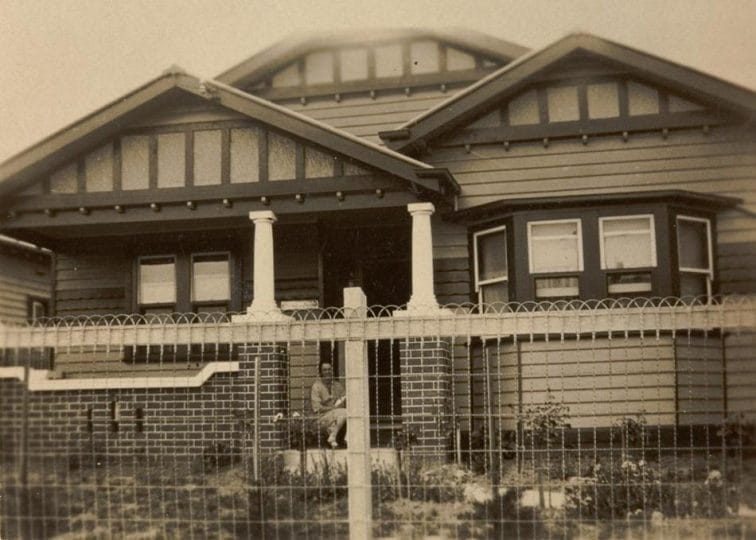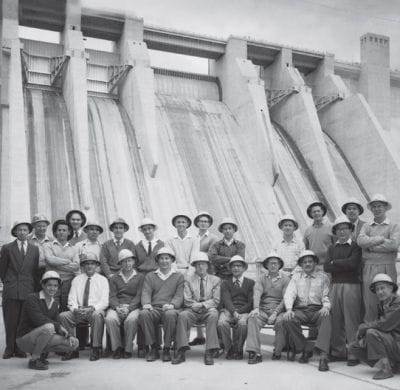The great Australian dream in a water sensitive age
The great Australian dream in a water sensitive age
Has pursuit of the Australian dream – house and garden on the quarter-acre block – led to unsustainable water consumption? While our population grows and climate change renders rainfall less reliable, millions of backyards in our sprawling cities continue to drink thirstily from increasingly scarce water resources.
But it is possible to adapt our suburbs to become more water sensitive, argues Associate Professor Seamus O’Hanlon, co-author of ‘Water, history and the Australian city: Urbanism, suburbanism and water in a dry continent, 1788–2015’. This new report by the CRC for Water Sensitive Cities is part of research output for Understanding social processes to achieve water sensitive futures (Project A2.1).
The engaging historical account of white settlement and water management in Brisbane, Melbourne, and Perth suggests how such adaptation might be achieved. Arguing that good public policy must be historically informed so that lessons of the past influence practice in the future, the report demonstrates the effectiveness of simple and relatively inexpensive strategies to reduce cities’ water consumption, and makes recommendations for how these measures may be employed as part of an overall strategy toward a more water sensitive future.

Historical context crucial to success
So can the Aussie dream survive in a water sensitive age? In fact, we have no choice, argues Seamus. “We simply cannot go back to year zero and start again. Rather, we must work with suburban communities to adapt to hydrological constraints.”
A central concept in the report is “path-dependency”, meaning that decisions made in the past constrain contemporary practices and policy options. For example, since the early nineteenth century, Australians have displayed a preference for low-density detached housing with gardens, despite the high per-capita cost of supplying services and infrastructure. That, argues Seamus, is not likely to change significantly.
Traditionally, water shortages in Australian cities have been overcome by increasing supply. Governments and water managers have focused on big engineering solutions, such as more and bigger dams (and, more recently, desalination plants) to “drought-proof” growing cities. Increasing water security during the post-war decades encouraged Australians to develop profligate water-use habits, such as frequent showering, growing lush gardens, and hosing driveways.
It was not until the 1980s that thinking began to turn from increasing supply to fostering more efficient usage. In some cities, residential water use had not even been monitored; and charging residents for its use was unthinkable.
 Pricing and public education
Pricing and public education
The report shows that, while Australians have been extravagant with water, they have always shown a remarkable willingness to adapt water habits and usage (notably for gardens) during times of crisis. In practice, two important but administratively simple and cheap policy changes have had enormous impact on residential water use: water pricing and public education campaigns.
This offers a valuable clue about how we can make our thirsty cities more water sensitive. Our adaptability to changed water conditions demonstrates how attitudes – of both government and the public – can change significantly. “Trusting in people to modify behaviour and having a price mechanism are big, big ways of making changes,” says Seamus.
However, the report points out how quickly lessons of water conservation are let go in times of plenty. It argues that we can no longer afford to forget: “In a climate-change influenced, water-constrained future, public education campaigns about the importance of water sensitivity should become a permanent component of public policy.”
Working with people

Working with people is pivotal, Seamus insists. “We need behaviour change, but we have to accept that people want to live in a certain way. So let’s adapt our policies to address that – the obvious one is rainwater tanks. The detached house allows you to capture water, which is not so easy to do in multistorey blocks and apartments.”
Jean Brennan, Coordinator Water and Catchments at Sydney’s Inner West Council, has had considerable success in delivering water sensitive outcomes through sub-catchment programs in Marrickville that work at the neighbourhood level and involve extensive engagement with local communities and stakeholders. “Every activity we do – from involving whole communities, to individuals and local government staff – is, in effect, public education,” she says.
“This report is a fascinating read and particularly useful for advancing the third pillar of water sensitive cities: cities comprising water sensitive communities,” says Jean. “It brings to light the importance of water professionals needing to understand the full history and context before embarking on plans and decisions around water management.”
Decision makers with historical understanding and support for community participation will develop appropriate, context-specific plans that are broadly supported and likely to be implemented, Jean argues. “This report will support practitioners to do that,” she says.
Nicola Dunnicliff-Wells for the Mind Your Way team
Further reading
Marrickville Council, 2014, Planning the Western Channel Subcatchment